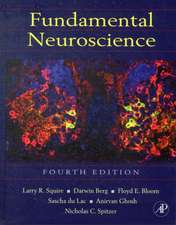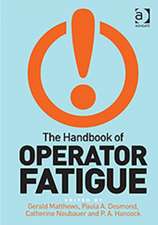Information Processing by Neuronal Populations
Editat de Christian Holscher, Matthias Munken Limba Engleză Paperback – 24 oct 2012
Preț: 473.07 lei
Nou
Puncte Express: 710
Preț estimativ în valută:
90.60€ • 93.35$ • 75.90£
90.60€ • 93.35$ • 75.90£
Carte tipărită la comandă
Livrare economică 25 februarie-11 martie
Preluare comenzi: 021 569.72.76
Specificații
ISBN-13: 9781107411296
ISBN-10: 1107411297
Pagini: 484
Dimensiuni: 170 x 244 x 24 mm
Greutate: 0.76 kg
Editura: Cambridge University Press
Colecția Cambridge University Press
Locul publicării:New York, United States
ISBN-10: 1107411297
Pagini: 484
Dimensiuni: 170 x 244 x 24 mm
Greutate: 0.76 kg
Editura: Cambridge University Press
Colecția Cambridge University Press
Locul publicării:New York, United States
Cuprins
Part I. Introduction: 1. How could populations of neurons encode information? Christian Hölscher; Part II. Organisation of Neuronal Activity in Neuronal Populations: 2. Cellular mechanisms underlying network synchrony in the medial temporal lobe Edward O. Mann and Ole Paulsen; 3. Cell assemblies and serial computation in neural circuits Kenneth D. Harris; 4. Neural population recording in behaving animals: constituents of a neural code for behavioral decisions Robert E. Hampson and Sam A. Deadwyler; 5. Measuring distributed properties of neural representations beyond the decoding of local variables - implications for cognition Adam Johnson, Jadin C. Jackson and A. David Redish; 6. Single-neuron and ensemble contributions to decoding simultaneously recorded spike trains Mark Laubach, Nandakumar S. Narayanan and Eyal Y. Kimchi; Part III. Neuronal Population Information Coding and Plasticity within Brain Areas: 7. Functional roles of Theta and Gamma oscillations in the association and dissociation of neuronal networks in primates and rodents Christian Hölscher; 8. Theta rhythm and bi-directional plasticity in the Hippocampus James Hyman and Michael Hasselmo; 9. Distributed population codes in sensory and memory representations of the neocortex Matthias Munk; 10. The role of neuronal populations in auditory cortex for learning Frank W. Ohl and Henning Scheich; 11. The construction of olfactory representations Thomas A. Cleland; Part IV. Functional Integration of Different Brain Areas in Information Processing and Plasticity: 12. Anatomical, physiological, and pharmacological properties underlying hippocampal sensorimotor integration Brian Bland; 13. A face in the crowd: which groups of neurons encode faces, and how do they interact? Kari L. Hoffman; 14. The role of interactions between prefrontal and visual cortex in learning and memory Kristina J. Nielsen and Gregor Rainer; 15. Gamma-band activity in human MEG during auditory processing Jochen Kaiser and Werner Lutzenberger; Part VI. Disturbances of Population Activity as the Basis of Schizophrenia: 16. Neural co-ordination and psychotic disorganization Andre Fenton; 17. The role of synchronous gamma band activity in schizophrenia Corinna Haenschel; Part VII. Summary and Future Targets: 18. Summary of chapters, conclusion and future targets Christian Hölscher and Matthias Munk.
Descriere
This book brings together information from different backgrounds in the observation of neuronal network activity during behaviour.













